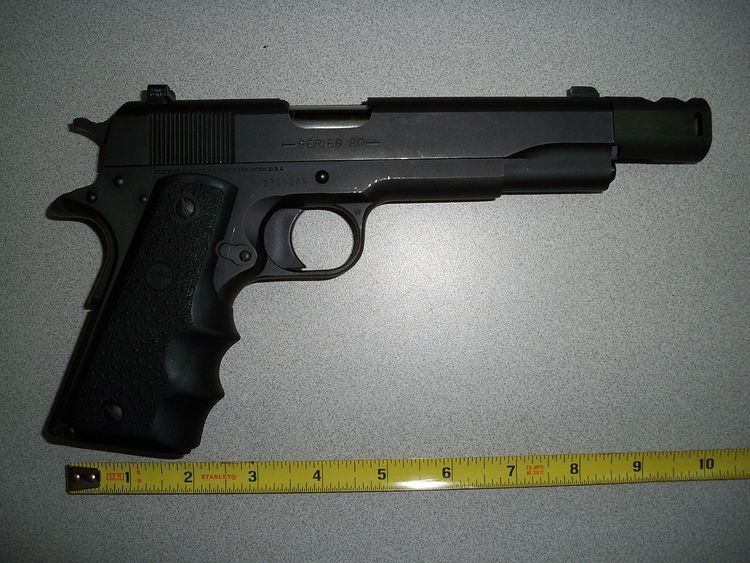 | ||
The .460 Rowland cartridge was designed, developed and trademarked by Johnny Ray Rowland, host of The Shooting Show. The purpose of the cartridge is to enable .44 Magnum power and performance in lightweight, high-capacity, semi-automatic hand guns. Rowland worked with his friend and noted pistol-smith Jim Clark to develop the conversion. Rowland then collaborated with Starline Brass to finalize commercial production of the casings. He first commercially distributed ammunition and conversions for the 1911 semi-automatic handgun in 1998 and became a partner in .460 Rowland LLC.
Contents
The company offers ammunition and conversions for various .45 ACP firearms. Among them are: 1911 5” Gov’t Model and 4.25” 1911 Commander, both made by numerous manufacturers; Glock-21 and Glock-30; Springfield Armory XD/XDm line, including 3.8" Compact, 4" Service Model, 4.5” Full Size, 5" Tactical, and 5.25" Target Model. The slim-lined Smith and Wesson M&P, both full size and compact, can also be converted.
Companies authorized or licensed to offer 460 Rowland products are .460 Rowland LLC (Tulsa, Oklahoma), Starline Brass (Sedalia, MO), Underwood Ammunition (Sparta, IL), and Tombstone Armory LTD, (Tombstone, AZ). Others are in evident violation of federal patent and trademark law.
Design
The .460 Rowland case is approximately 1/16" longer than a conventional .45 ACP case, but the overall cartridge length is the same; the bullet is simply seated more deeply. The purpose of the extended case length is to prevent the high pressure .460 Rowland from being chambered in a standard firearm chambered for the low pressure .45 ACP.
The .460 Rowland cartridge sharply increases chamber pressure and gas volume when compared to .45 ACP cartridges, which drives projectiles to true .44 Magnum velocities as their specially tuned compensators momentarily lock slide action in order to vent gas pressure, allowing the slide to operate under near normal pressures. Higher chamber pressures deliver magnum level performance while the imperceptible delay in slide action allows the cartridge to be fired from many compact, lightweight, high capacity, autoloading pistols.
Conversions
Autoloaders converted to fire the .460 Rowland Cartridge require a properly designed compensator or ported barrel. Ported barrels have proven viable in managing the power of the cartridge, but result in somewhat more muzzle flip and felt recoil. The cartridges can be more readily taken in and out of the slide (moot in a 1911)—legal in restrictive states like California—without needing to permanently secure the compensator to the barrel.
High quality 1911s are manufactured by many different companies and tolerances vary with each manufacturer. It is necessary to adjust recoil spring tensions and to identify specific magazines that work best in each gun. This must be done when converting a 1911 to fire the .460 Rowland cartridge. The company says a properly designed conversion requires an effective compensator to momentarily delay slide action and allow very high pressures and volumes of gas to dissipate to manageable levels before slide action may begin. Without this compensation, slide or frame failure will likely result over time and reliability will suffer in the short term.
The Ruger Blackhawk and Smith & Wesson Model 25/625 can also be chambered to fire the .460 Rowland. Converting these revolvers requires deepening the chambers and is effectively permanent, unless the owner has a replacement cylinder fitted. For several years Dan Wesson also made a revolver specifically for the .460 Rowland, which would also chamber .45 ACP, .45 Super and .45 Winchester Magnum, as does the Smith & Wesson Model 25/625. Both guns use moon clips. Rowland does not support customer demand for "stock-looking" .460 Rowland conversions.
